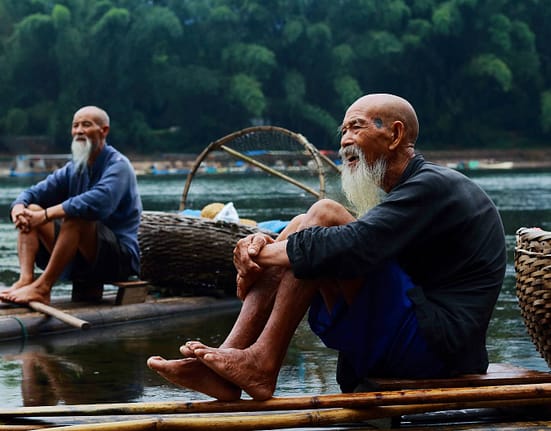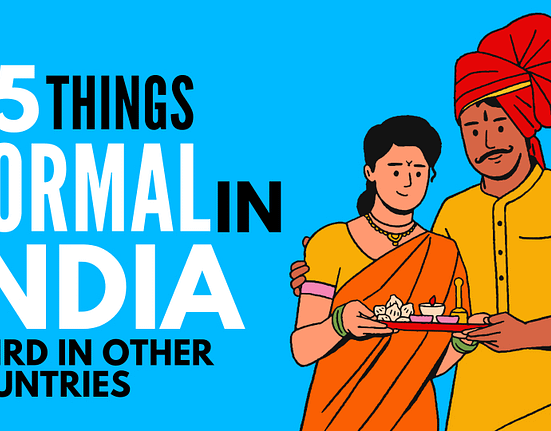Japan is renowned for its rich cultural tapestry, and nowhere is this more evident than in its diverse array of festivals.
From ancient traditions to modern celebrations, Japan’s festivals offer a unique glimpse into the country’s history, beliefs, and social fabric.
In this comprehensive guide, we’ll explore 15 weird festivals in Japan has to offer, delving into their origins, customs, main highlights, locations, and dates.
1. Naki Sumo Matsuri (Crying Baby Festival)

Origin and Background: The Naki Sumo Matsuri, or Crying Baby Festival, is a unique celebration that dates back over 400 years. This festival originated from the belief that a baby’s cry can ward off evil spirits and bring good fortune.
Location and Date: Held at Sensoji Temple in Tokyo, this festival typically takes place in late April or early May.
Customs and Main Highlights: The festival’s main event involves sumo wrestlers holding babies and attempting to make them cry. The first baby to cry is declared the winner, believed to be blessed with a healthy future. This unusual custom draws crowds of spectators eager to witness this peculiar competition.
2. Hokkai Heso Matsuri (Belly Button Festival)
Origin and Background: The Hokkai Heso Matsuri is a relatively modern festival, started in 1969 as a way to boost tourism in the area. It has since become a beloved local tradition.
Location and Date: Celebrated in Furano, Hokkaido, this festival usually takes place in late July.
Customs and Main Highlights: Participants paint faces on their bellies and perform choreographed dances. The festival features a parade where dancers showcase their belly art, creating a visually striking and humorous spectacle. This unique celebration has become a symbol of Furano’s quirky charm.
3. Kanamara Matsuri (Penis Festival)

Origin and Background: The Kanamara Matsuri, or Penis Festival, has its roots in ancient fertility rituals and prayers for protection against sexually transmitted diseases. It has evolved into a modern celebration that also serves as a fundraiser for HIV-related charities.
Location and Date: This festival is held in Kawasaki, typically on the first Sunday of April.
Customs and Main Highlights: The festival features numerous phallic symbols, including large penis-shaped mikoshi (portable shrines), penis-shaped candies, and various phallic decorations. Participants and visitors can purchase these unique souvenirs, take part in penis-themed games, and watch the parade of giant phalluses through the streets of Kawasaki.
4. Hadaka Matsuri (Naked Man Festival)
Origin and Background: The Hadaka Matsuri, or Naked Man Festival, has a history dating back over 500 years. It originated as a purification ritual and a way to drive out evil spirits.
Location and Date: This festival takes place in Okayama, usually in mid-February.
Customs and Main Highlights: Despite its name, participants are not entirely naked but wear minimal clothing, typically only a loincloth called a “fundoshi.” The main event involves thousands of men competing to catch sacred wooden sticks thrown by priests. It’s believed that catching these sticks brings good fortune for the year ahead. The sight of nearly-naked men braving the cold winter night to participate in this frenzied competition is truly a unique spectacle.
5. Sedo Namahage Festival
Origin and Background: The Sedo Namahage Festival is rooted in ancient Japanese folklore and has been practiced for centuries. It’s based on the legend of the Namahage, demon-like creatures that descend from the mountains to scare misbehaving children and lazy adults.
Location and Date: This festival is celebrated in Akita Prefecture, typically on New Year’s Eve.
Customs and Main Highlights: Men dressed as Namahage demons, wearing masks and straw capes, visit homes in the community. They stomp around, making loud noises and pretending to scare children, encouraging them to behave well and work hard in the coming year. Despite its intimidating nature, the festival is seen as a way to strengthen community bonds and pass on traditional values.
6. Awa Odori Festival

Origin and Background: The Awa Odori Festival is one of Japan’s most famous dance festivals, with a history dating back over 400 years. It originated as a celebration of the completion of Tokushima Castle in 1586.
Location and Date: This festival takes place in Tokushima City, Tokushima Prefecture, from August 12-15 each year.
Customs and Main Highlights: The festival is known for its distinctive dance style, where participants move in a shuffling motion while chanting “Yatto, yatto” (Heave-ho, heave-ho). Dancers are divided into groups called “ren,” each with their own unique costumes and dance styles. The festival attracts over a million visitors annually, making it one of the largest dance festivals in Japan.
7. Aomori Nebuta Festival
Origin and Background: The Aomori Nebuta Festival has its roots in the Tanabata traditions and ancient Japanese beliefs about warding off sleep demons. It has evolved into one of Japan’s most spectacular summer festivals.
Location and Date: Held in Aomori City, Aomori Prefecture, this festival typically runs from August 2-7 each year.
Customs and Main Highlights: The festival’s main attraction is the parade of enormous, illuminated floats called “nebuta.” These floats, some reaching up to 5 meters high and 9 meters wide, depict scenes from history, mythology, and kabuki plays. The floats are accompanied by dancers called “haneto,” who perform energetic dances while chanting “Rassera, rassera!” The sight of these massive, glowing floats moving through the streets at night is truly awe-inspiring.
8. Paantu Festival
Origin and Background: The Paantu Festival is an ancient Okinawan tradition with roots in animistic beliefs. It’s believed to have originated as a ritual to ward off evil spirits and bring good fortune to the community.
Location and Date: This festival takes place on Miyakojima Island, Okinawa Prefecture, usually in September or October.
Customs and Main Highlights: The festival’s main characters are the Paantu, men covered from head to toe in mud and foliage. These Paantu roam the streets, smearing mud on people and buildings to ward off evil and bring good luck. While the tradition may seem alarming to outsiders, it’s considered an honor to be touched by the Paantu. The festival provides a unique glimpse into Okinawa’s distinct cultural heritage.
9. Shukatsu Festa (Try-Before-You-Die Festival)

Origin and Background: The Shukatsu Festa, or Try-Before-You-Die Festival, is a modern event that reflects Japan’s aging population and changing attitudes towards death and funeral practices.
Location and Date: This unusual festival doesn’t have a fixed location or date but is held periodically in various cities across Japan.
Customs and Main Highlights: Participants at this festival can experience their own funerals, including trying out coffins, wearing funeral garments, and even writing their own eulogies. The event aims to help people confront their mortality and plan for end-of-life care. While it may seem morbid to some, many participants find it a profound and even liberating experience.
10. Akutai Matsuri (Cursing Festival)
Origin and Background: The Akutai Matsuri, or Cursing Festival, has its roots in ancient purification rituals. It’s believed that by shouting curses and insults, participants can drive away evil spirits and negative energy.
Location and Date: This festival is held on Mount Atago in Ibaraki Prefecture, typically in early December.
Customs and Main Highlights: During the festival, participants shout curses and insults at priests dressed as demons. The more creative and colorful the insults, the better. This cathartic release of negative emotions is believed to cleanse the soul and bring good fortune for the coming year. Despite its aggressive nature, the festival is conducted in a spirit of fun and community bonding.
11. Warai Matsuri (Laughing Festival)
Origin and Background: The Warai Matsuri, or Laughing Festival, is based on the belief that laughter has the power to bring happiness and good fortune. It’s rooted in the Japanese concept of “warai,” which encompasses both laughter and smiling.
Location and Date: This festival is held in Hidakagawa, Wakayama Prefecture, usually in the first week of February.
Customs and Main Highlights: The main event of the festival involves participants gathering at a local shrine to laugh together. The laughter starts with a gentle chuckle and gradually builds to uproarious laughter. This collective act of joy is believed to cheer up the local deity and bring good luck to the community. The festival also features comedy performances and laughter yoga sessions.
12. Yokote Kamakura Festival

Origin and Background: The Yokote Kamakura Festival has a history dating back over 450 years. It originated as a way to pray for a good harvest and protection from evil spirits.
Location and Date: This festival takes place in Yokote City, Akita Prefecture, on February 15-16 each year.
Customs and Main Highlights: The festival’s main attraction is the construction of numerous snow huts called “kamakura.” These dome-shaped structures, some large enough for several people to sit inside, are illuminated from within by candles, creating a magical winter landscape. Inside each kamakura, children serve amazake (sweet rice wine) and mochi (rice cakes) to visitors, praying for health and happiness in the coming year.
13. Nachi Fire Festival

Origin and Background: The Nachi Fire Festival, or Nachi no Ogi Matsuri, is one of Japan’s most spectacular fire festivals. It has its roots in ancient Shinto purification rituals and worship of the Nachi waterfall.
Location and Date: This festival is held at Kumano Nachi Taisha shrine in Wakayama Prefecture on July 14 each year.
Customs and Main Highlights: The highlight of the festival is the procession of 12 massive torches, each weighing about 50 kilograms and measuring 6 meters in length. These torches represent the 12 deities enshrined at Kumano Nachi Taisha. Participants carry these blazing torches down the stone steps of the shrine, creating a dramatic and fiery spectacle. The festival is believed to transfer the waterfall’s power to the people.
14. Chabudai-Gaeshi (Angry Tea Table Flipping Contest)
Origin and Background: The Chabudai-Gaeshi, or Angry Tea Table Flipping Contest, is a modern festival that humorously addresses the stress of everyday life in Japan. It’s based on the dramatic gesture of flipping a tea table in anger, often seen in Japanese media.
Location and Date: This unique contest doesn’t have a fixed location or date but is held periodically in various parts of Japan.
Customs and Main Highlights: Participants compete to see who can flip a tea table in the most dramatic and expressive way. They typically shout out their frustrations (such as work stress or family problems) before flipping the table. The contest is judged based on the force of the flip, the participant’s facial expression, and the creativity of their complaint. While unconventional, this festival provides a cathartic and humorous outlet for stress relief.
15. Farts of Beautiful Women Festival
Origin and Background: The Farts of Beautiful Women Festival, or “Bijin Onarabashi,” is a peculiar aspect of Girls’ Day celebrations in some parts of Tokyo. Its origins are somewhat obscure, but it’s believed to be a modern, humorous take on traditional fertility rituals.
Location and Date: This unusual event is part of Girls’ Day celebrations in certain areas of Tokyo, typically held on March 3.
Customs and Main Highlights: During this event, young women compete to produce the loudest and most melodious fart. While it may seem crude to some, the event is conducted with a sense of humor and is seen as a way to break taboos around bodily functions. It’s important to note that this is a niche event and not widely practiced across Japan.
Conclusion
In conclusion, these 15 weird festivals in Japan offer a fascinating glimpse into the country’s diverse cultural landscape. From ancient traditions to modern celebrations, each festival tells a unique story about Japanese history, beliefs, and social norms.
Whether it’s the spiritual significance of the Nachi Fire Festival, the communal joy of the Warai Matsuri, or the stress relief of the Chabudai-Gaeshi, these festivals demonstrate the many ways in which Japanese people come together to celebrate, reflect, and find meaning in their lives.
It’s worth noting that festival dates can vary from year to year, especially for those based on lunar calendars. Additionally, recent global events may have affected the scheduling or format of some festivals. Therefore, it’s always advisable to check the most current information before planning a visit to any of these unique celebrations.
These festivals not only provide entertainment and cultural experiences for visitors but also play a crucial role in preserving local traditions, strengthening community bonds, and passing on cultural values to future generations.
They offer a window into the heart of Japanese culture, revealing a society that values both tradition and innovation, solemnity and humor, in its approach to life and spirituality.









